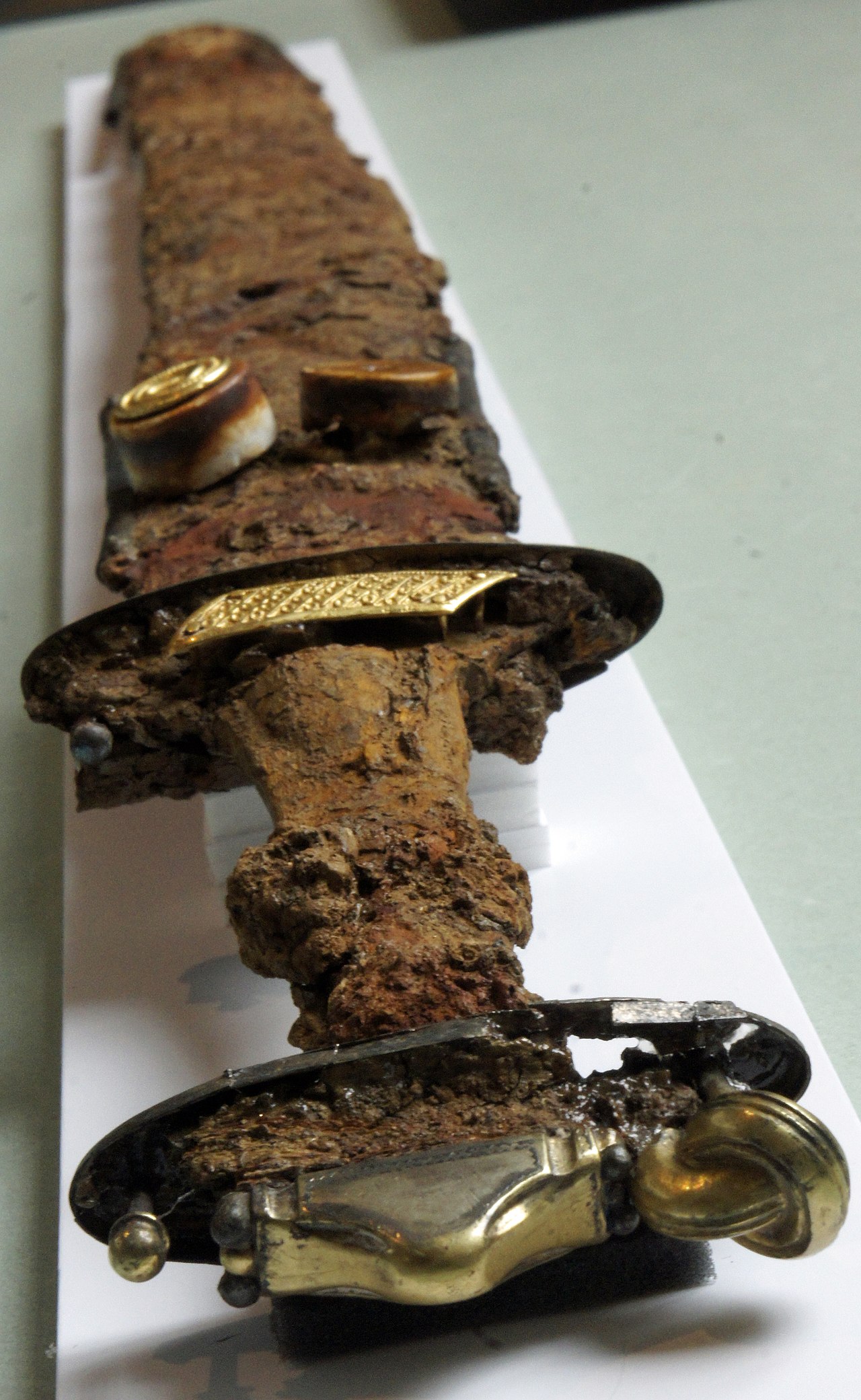Norse Mythology
Your home for discussion of Norse mythology, the body of myths of ancient speakers of North Germanic languages.
Rules
We’ll start simple and adjust as necessary:
- Don’t just be civil, be nice as well.
- No racism, bigotry, or discriminatory ideologies.
- Mythology should be discussed from a historical and etic perspective.
Getting Started
The vast majority of Norse myths come from two books that are surprisingly accessible to modern audiences if you have a good translation. And as it so happens, they are also free!
My recommendation is to download this version of the Poetic Edda and this version of the Prose Edda.
The Poetic Edda is a compilation of poems composed by mostly anonymous authors. Although these were first recorded on paper after the conversion to Christianity, linguistic evidence supports the notion that most of the poems were originally composed during the pagan period.
The Prose Edda was composed in the 13th century, and is traditionally thought to have been written by a Christian scholar and chieftain from Iceland named Snorri Sturluson. Snorri’s motivation was to provide a narrative guide to deciphering and composing skaldic poetry in the ancient style. Accomplishing this goal required him to recount pagan myths that are referenced in this type of poetry as accurately as he was able. Although the Prose Edda is not a perfect source, the author is motivated to deliver accurate information and details in his narratives are often confirmed by carvings on pagan picture stones found throughout the Norse diaspora.

Östergötland 43 is a super cool runestone from Ingelstad in Sweden. It's dated to the mid 800s A.D. and features a lone Elder Futhark "D" rune (ᛞ) sitting amidst an otherwise Younger Futhark inscription.
Elder Futhark was the runic alphabet of the Proto-Germanic and Proto-Norse periods in Scandinavia, in use from approximately 1 A.D. until some time in the 700s A.D. By the canonical beginning of the Viking Age with the attack on Lindisfarne in 793, the transition to the Younger Futhark had already completed.
Yet in Ög 43 we appear to see some remnants of that transition, and indeed this may be one of the last attestations of Elder Futhark in Scandinavia. The reconstructed name of the ᛞ rune in Elder Futhark is *dagaz "day". This word became dagaʀ in Proto-Norse and ultimately dagr in Old Norse. It retained its meaning of "day," but also became a relatively common male first name. Although the full meaning of the Ög 43 inscription is not perfectly clear, ᛞ appears to be used as a logographic representation of the name "Dagr". In simpler terms, imagine that your name was "Jay", and you simply wrote it as "J".
The inscription appears to read as follows:
⋮ salsi karþi sul
⋮ D ⋮ skut- - þ--a hiu
In Old Norse this would be read something like:
Sǫlsi gærði sól.
Dagr skut(li?) þætta hjó.
And in English that translates to:
Solsi made a sun.
Dag struck out this skutli?.
The first line likely does not refer to the actual sun but to a sun symbol that was carved near the runes. It is difficult to make out in the picture, but can be seen more clearly in this closeup photo of the symbol. This line gives attribution to a person named Solsi for carving it.
The second line appears to be giving attribution to another person named Dagr for carving some other part of the stone, perhaps the runes themselves, the nearby cross, or even the sword at the top of the inscription. The problem, of course, is with that word skut(li?). Since this line has been damaged, the word is difficult to decipher. There have been various attempts at interpretation, but none are entirely convincing.
This formula wherein two individuals contribute to the creation of a runestone and are both given credit in the inscription is fairly common. In other cases we see it following a pattern more like "Person A cut these runes. Person B colored them."
The sun symbol itself was an important religious symbol in Scandinavia from at least the Bronze Age on down through the Norse period until Christianization. In Norse mythology, the sun is described as a goddess named Sól who is chased around the Earth by a monstrous wolf that will eventually catch and devour her at Ragnarǫk, a cataclysm in which the world is destroyed.
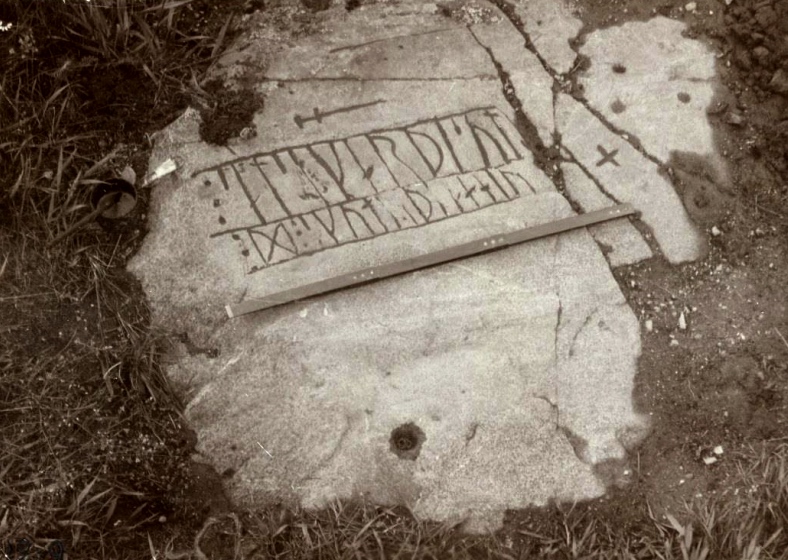
Warning: strong opinions incoming
Imagine that tonight I sit down at my computer and write an original story about the Norse gods in which Freyr murders Odin and becomes the new chief god. I then publish this story online, making it available to the world. The next day I find a place online where experts are discussing Norse mythology. One of them mentions that Odin is the chief god and I correct him: "This is only true up until the point where he is murdered by Freyr," I say. The expert responds, "that doesn't happen in Norse mythology," to which I reply, "Sure it does. Here's a link to the new myth I wrote last night."
Most of us will have a gut reaction that things don't work this way. I can't just write an original story and call it authentic Norse mythology. But why is that? After all, every myth was invented by somebody. Is it because my story isn't old enough? Because I'm not a credentialed expert? Because I'm not a native Scandinavian? Because I'm not a practitioner of ancient Norse paganism? Because allowing everyone to do this would result in a chaotic, contradictory mess?
Well, mythology is already a chaotic, contradictory mess.
The stories that have survived into modern times survived only because they were written down by Christians who still remembered them centuries after the old religion had been replaced. Prior to this, they were passed down orally from generation to generation, evolving and changing continually over thousands of miles and several millennia, and taking on some plot holes in the process.
For this reason, there is no official mythological canon, and indeed there never was. However, what we do find in the surviving material are common themes and motifs that we know from their wide range of use were important enough to persist and reoccur, sometimes throughout the Germanic-speaking world as a whole.
Within that world, myths were frequently modified and sometimes even invented, perhaps by poets or prophetic individuals, or by any number of other potential means. Unique innovations probably even arose within families. And when circumstances were favorable, new ideas would spread. Presumably, a new idea would be most easily adopted by others if it fell inline with their cultural and religious expectations at the time, or in other words, because it properly applied implicitly understood themes and motifs. If a practicing pagan poet from Norway were to visit Iceland in 900 A.D., bringing with him a new tale about some mischief the gods got up to, surely there would be a much higher chance that his story would be adopted by Icelanders than if I were to time travel to 900 A.D. and attempt the same thing.
This is because I’m an outsider and have only a surface-level understanding of ancient Norse religion and culture. (Only a surface-level amount of information survives.) There’s a good chance that any story I invent won’t “sit right” with ancient Norse pagans because my characters won’t adhere to proper behavioral expectations or because I’ve misunderstood or misapplied some widely-held, long-standing principle in a way that appears nonsensical or even just "off" in some way to native practitioners. As an outsider to the belief system, I don’t have the knowledge (or dare I say, the right) to modify that belief system. This is ultimately why any new myth I invent will not, and should not, be accepted as authentic Norse mythology: I'm not an ancient Norse person.
With that in mind, who has the right to update ancient mythology? For the most part, the answer ought to be the same: no one alive today can make authentic changes to information beyond how it is recorded in our source material (though this is a bit different from attempts to properly interpret what has been recorded). And this is the trick when it comes to retellings.
The most entertaining version of a story by modern sensibilities will often be the one that has embellished the most details and deviated the farthest from surviving source material. Marvel comics would fit into this category. But if the desire is to learn actual mythology, a retelling will typically be a less-effective tool than a good translation of the sources it derives from.
In my opinion, an ideal retelling would use some kind of system (maybe footnotes?) to call out all of the embellishments and interpretations it has made, justify why they were made, and explain why each one is believed to fit within the cultural and religious sensibilities of ancient Norse society. This may seem like an unreasonable request, until we look at the ways in which popular retellings (I'm lookin' at you, Neil) have negatively impacted the average person's understanding of Norse mythology. Such retellings have perpetuated the incorrect notions that jötnar are a gigantic class of beings, that Thor is an unintelligent individual, that Fenrir was an innocent puppy who just wanted friends, and that Odin is trying to prevent Ragnarok, just to name a few. Had authors been required to justify and explain these sorts of embellishments, they would likely never have seen the light of day.
Ultimately, retellings can serve to provide a cursory overview of major gods and myths. But at the point where a person becomes serious enough to become a student of the mythology (or interested enough to explain what they've learned to anyone else!), there will inevitably be a good bit of un-learning of incorrect, inauthentic information that will have to occur in order to prevent spreading it. This is even more true if a person’s interest was piqued by video games like "God of War" or "Assassin's Creed" whose development teams “did a lot of research” only to ignore most of what they learned by the time the games were released in favor of making a buck.
This is why we are lucky to have the Faulkes translation of the Prose Edda and the Pettit translation of the Poetic Edda. Both are gold-standard translations of source material, both are highly accessible to modern audiences in style, and both are freely available for download. If you're looking for access to authentic mythology, you might as well skip the retellings altogether.
...unless you can find one with extensive footnotes and citations :)

There is perhaps no more confusing a question in Norse mythology than “what is an elf?” It’s so confusing in fact that this entire post will not be able to answer it. Instead, we’ll start by deciphering just one of the many pieces of the overall elf puzzle.
To begin, our pagan-era poetic sources never mention any sort of elf categories. As far as the surviving poetry is concerned, elves are just elves. The Prose Edda, on the other hand, composed by 13th-century Christian scholars, divides elves into what look like three categories on the surface, but which are probably only two categories if we pay a little closer attention. The three terms it uses are ljósálfar (light elves), døkkálfar (dark elves), and svartálfar (black elves). All of these translations are literal.
Here’s all we get about both light elves and dark elves, from Gylfaginning 17 (Faulkes transl.):
High said: ‘Many splendid places are there [in the heavens]. There is one place that is called Alfheim. There live the folk called light-elves, but dark-elves live down in the ground, and they are unlike them in appearance, and even more unlike them in nature. Light-elves are fairer than the sun to look at, but dark-elves are blacker than pitch. […] They say there is another heaven south of and above this heaven of ours, and that heaven is called Andlang; and that there is a third heaven still further above that one, and that is called Vidblain, and it is in that heaven that we believe this place to be. But we believe it is only light-elves that inhabit these places for the time being.‘
And thus here are the “facts” so far:
- Light elves live in Alfheim in the heavens
- Dark elves live down in the ground
- Light elves are fairer than the sun
- Dark elves are blacker than pitch
- Light and dark elves are different in nature (almost certainly implying some sort of benevolence versus malice)
- Light elves are the only beings inhabiting certain places in the heavens, for now.
The terms “light elf” and “dark elf” aren’t ever used again outside of this passage. And as I already mentioned, they do not occur at all in the Poetic Edda.
By contrast, we are never given an explanatory breakdown about “black elves”. They are mentioned only in passing in three different stories. Here’s everything we have on them:
From Gylfaginning 34, the gods have decided to bind the wolf Fenrir with a special fetter. In order to do this…
Þá sendi Alföðr þann, er Skírnir er nefndr, sendimaðr Freys, ofan í Svartálfaheim til dverga nökkurra ok lét gera fjötur þann, er Gleipnir heitir.
Then All-father sent someone called Skirnir, Freyr’s messenger, down into the world of black-elves to some dwarfs and had a fetter called Gleipnir made.
From Skáldskaparmál 35, Loki has just cut off the hair of Thor’s wife Sif. Thor threatens to break every bone in Loki’s body but…
…hann svarði þess, at hann skal fá af Svartálfum, at þeir skulu gera af gulli Sifju hadd þann, er svá skal vaxa sem annat hár. Eftir þat fór Loki til þeira dverga, er heita Ívaldasynir, ok gerðu þeir haddinn…
…he swore that he would get black-elves to make Sif a head of hair out of gold that would grow like any other hair. After this Loki went to some dwarfs called Ivaldi’s sons, and they made the head of hair…
From Skáldskaparmál 39, some of the gods have offered to pay a ransom for killing an otter that they didn’t realize was actually a person who had shapeshifter into an otter. The gods are to fill the otter skin with gold but they don’t have that much gold on them so…
Þá sendi Óðinn Loka í Svartálfaheim, ok kom hann til dvergs þess, er heitir Andvari. Hann var fiskr í vatni, ok tók Loki hann höndum ok lagði á hann fjörlausn allt þat gull, er hann átti í steini sínum.
Then Odin sent Loki into the world of black-elves and he came across a dwarf called Andvari. He was a fish in a lake, and Loki captured him and imposed on him as a ransom all the gold he had in his cave.
Have you noticed the common thread among all three passages? Every time a character ventures into Svartálfheimr (black-elf realm), the people they meet there are always dwarves. In the story about Sif’s hair, Loki even claims that he will get some black elves to make new hair, and the characters he contracts to do this for him are called dwarves.
In the context of the Prose Edda, svartálfr (black elf) is clearly just a synonym for dvergr (dwarf).
But in connection with this, the scant information we have also leads us to conclude that døkkálfr (dark elf) is also just a synonym for svartálfr.
Firstly, “dark elves are blacker than pitch” (døkkálfar eru svartari en bik). They are described using specifically the word svartr. Secondly, sources tend to agree that dwarves live underground or in the rocks, as is succinctly stated in Gylfaginning 14:
The dwarfs had taken shape first and acquired life in the flesh of Ymir and were then maggots, but by decision of the gods they became conscious with intelligence and had the shape of men though they live in the earth and in rocks.
Living in the earth and in rocks matches up with what we have been told about dark elves, namely that they live “down in the ground”. Additionally, when Skirnir went to get the fetter Gleipnir from some dwarves, he went “ofan í Svartálfaheim”, literally “downwards into black-elf-realm”, likely implying that Svartalfheim is down within the earth. Then, of course, there’s the issue that black elves are absent from our explanatory breakdown about elves, whereas dark elves are absent from any narratives containing elves. These clues are small, but they all point in the same direction, that dark elves are likely the same as black elves, and this category is synonymous with dwarves.
This leaves us to assume that the Prose Edda’s so-called “light elves” likely comprise the entirety of what the Poetic Edda simply calls “elves” which occupy the domain of Alfheim. The notion of black elves, and their realm Svartalfheim (again, neither of which appear in the Poetic Edda at all) might even be an invention of the Prose Edda’s author(s) looking for a way to fit Norse mythological beings into the mold of Christian angels and demons. Note the dichotomy between living in the heavens versus down below the earth, as well as the dichotomy between being bright and beautiful like the sun versus being blacker than pitch, as well as the opposing natures of the two groups.
This of course does not give us much in the way of an explanation for what an elf really is, but at least when it comes to dark or black elves, we can pretty safely drop the idea that they are unique categories of beings with some unique realm of existence. They live where the dwarves live, because that’s what they are.
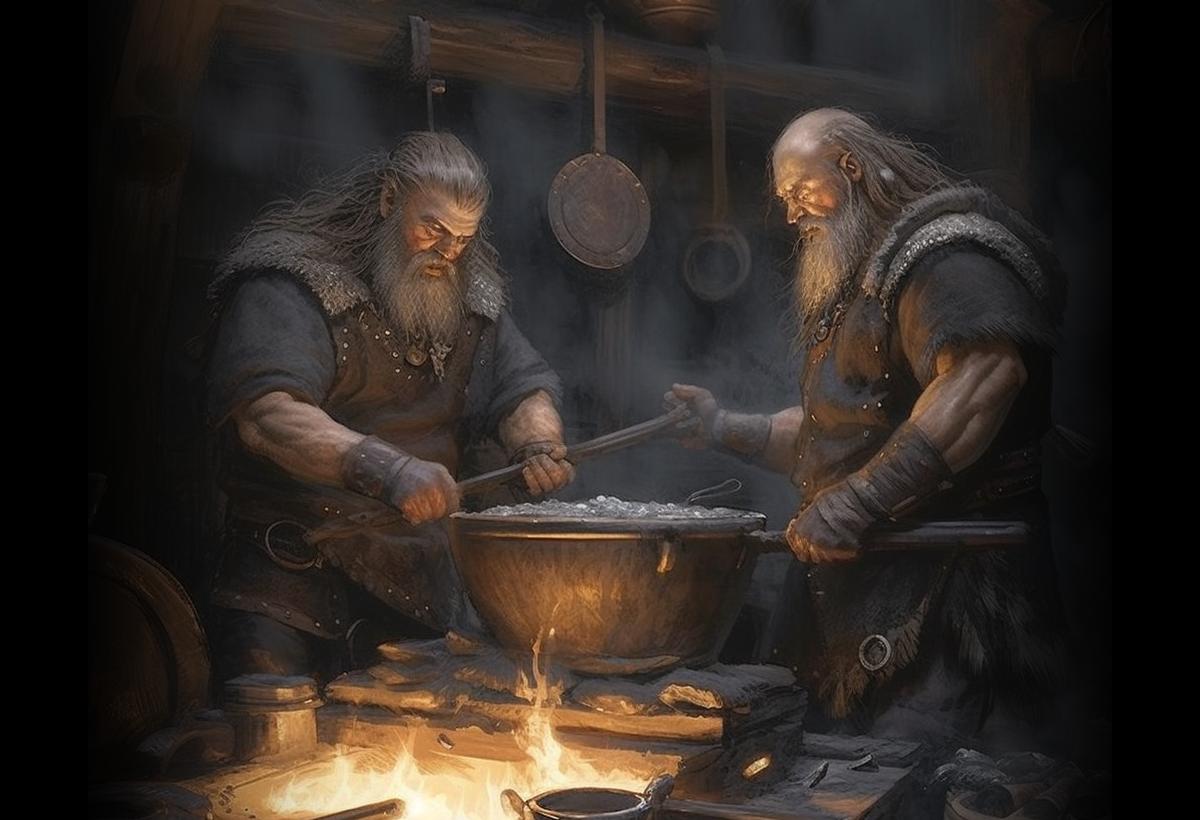
This content has been moved to Substack: https://norsemythology.substack.com/p/norse-cosmology-part-ii-the-shape
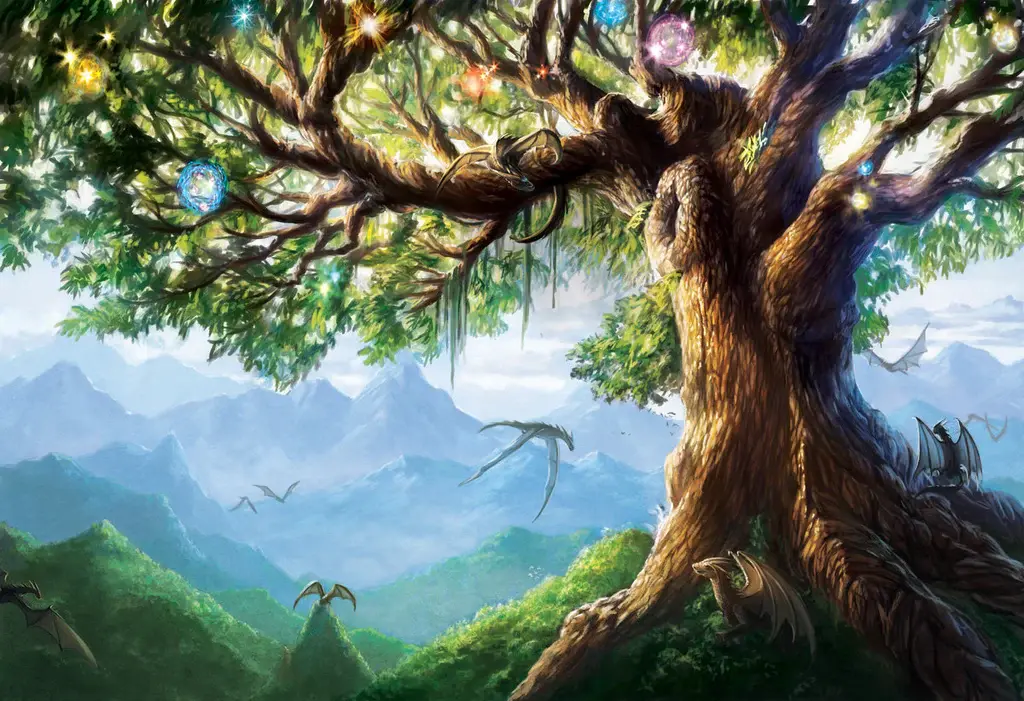
This content has been moved to Substack: https://norsemythology.substack.com/p/norse-cosmology-part-i-the-nine-realms

There are a lot of details missing from the surviving body of recorded Norse myths and poetry, particularly when it comes to details about how the gods played a role in the lives of common people in the past. Fortunately, we sometimes get a cool hint here or there from an average person who scribbled something down on an artifact that still survives. Such is the case with the Canterbury charm, the Kvinneby Amulet, and Sigtuna Amulet I (links to wikipedia for intro-level information).
Before we dive into them, what do we know about Thor? For one, his very name associates him with thunder in most Germanic traditions. We also know that he typically wields a unique weapon (normally a hammer) that he uses for killing trolls/jötnar/thursar/etc. In the Norse tradition, Thor is usually not at home in Asgard at the beginning of stories that don’t feature him as protagonist. However, he often returns to Asgard when necessary, and sometimes as a deus ex machina, to deal with some problem causer (i.e., the fortification-builder, Hrungnir, or even Loki in Lokasenna). In stories where he is the main character, the story still typically involves a journey away from home. Universally, in cases where Thor is away and we are told where he is, he tends to be “in the east” (a usual location of Jötunheimr) killing jötnar (traditionally and erroneously called “giants”). But why does he do this? What did the jötnar ever do to him? Is he just a genocidal maniac?
As it turns out, the answer is no. And given that Thor's own mother is a jötun, this would indeed be an odd character trait. In fact, there are many jötun characters that Thor does not desire to kill and even have friendly relations with him. So how does he decide which ones need to go?
Although recorded myths don’t offer much of an explanation here, artifacts like the ones I mentioned above can help us fill in some missing details, as they provide examples of the way the Norse religion played a role in real peoples’ lives. Let's take a look at their inscriptions:
The Canterbury Charm
This is the text of some Old Norse runes found written in an Anglo-Saxon manuscript from 1073 AD. The normalized Old Norse reads...
Gyrils sārþvara far þū nū! Fundinn eʀ þū! Þōrr vīgi þik, þursa drōttinn, Gyrils sārþvara. Viðr aðravari.
And in my own translation, "Gyril sore-causer, leave now! You are found! May Thor use divine power upon you, lord of thursar, Gyril sore-causer. Against blood infections."
Next up–
The Kvinneby Amulet
This is the text of a runic amulet discovered in Öland, and possibly dating to between 1050-1130 AD. This one has proved a bit trickier to read in some places, but the overall message is similar in different translations. Here is what the runes say:
h(i)ʀiurkimsutiʀkuþiʀbirk bufimeʀfultihu þisþeʀuisinbral tilufranbufaþorketih ansmiʀþemhamrisamhyʀ hafikamflyfraniluit feʀekiafbufakuþiʀu untiʀhanumaukyfiʀhan um
And here is the Pereswetoff-Morath translation: "Here I carve (may I carve/carved) help for you, Bove, with complete assistance. Fire is safe for you (known to you), (the fire which) took all evil away from Bove. May Thor protect him with the hammer which came from the sea. Flee from the evil one! Magic (evil) achieves nothing with Bove. Gods are under him and over him."
In both of the above "charms", Thor is invoked to use his divine power for protecting a human being against attacks by some evil being. In the Canterbury charm, we see a direct association between the evil thurs (often used synonymously with jötunn in the literature) and disease, and it is therefore not a stretch to assume the "evil one" mentioned in the Kvinneby amulet is also a jötunn or thurs. But is there any reason to believe that this "evil" one is attacking Bove by way of disease as we see in the Canterbury charm? Not directly, but the Sigtuna Amulet (which probably does not directly mention Thor) provides another attestation of this idea:
Sigtuna Amulet I
This is another 11th century runic amulet, this time found in Uppland. The normalized Old Norse reads as follows:
Þór/Þurs sárriðu, þursa dróttinn! Fljú þú nú! Fundinn er[tu]. Haf þér þrjár þrár, Ulfr! Haf þér níu nauðir, Ulfr! <iii isiʀ þis isiʀ auk is uniʀ>, Ulfr. Njót lyfja!
And in my own translation, "Thurs of sore-fevers, lord of thurses, flee now, you are found. Have yourself three torments, wolf (probably just meaning vicious monster). Have yourself nine needs, wolf. With these "i" runes, "iii" (used here as a magical incantation), the wolf is appeased. Enjoy healing."
Here we see again that a thurs is causing a "sore-fever" (perhaps a fever induced by an infected wound). Magic is invoked to curse the thurs and thereby heal the human victim.
What this information shows is that supernatural creatures were believed to be the direct cause of human ailments in Norse (and maybe more broadly Germanic?) religion. Whereas stories in which Thor is out hunting these beings do not mention this notion explicitly, ancient practitioners of the religion would have apparently understood that those beings are not innocently minding their own business, but are devoting their efforts to afflicting innocent humans. Believers would have invoked Thor to kill their tormentors and thereby rescue them. So when we read that Thor was constantly out slaying jötnar, we should understand this as him dutifully answering the prayers of the afflicted, rescuing humanity from the ailments caused by evil creatures.
In no uncertain terms, Thor is humanity’s hero.
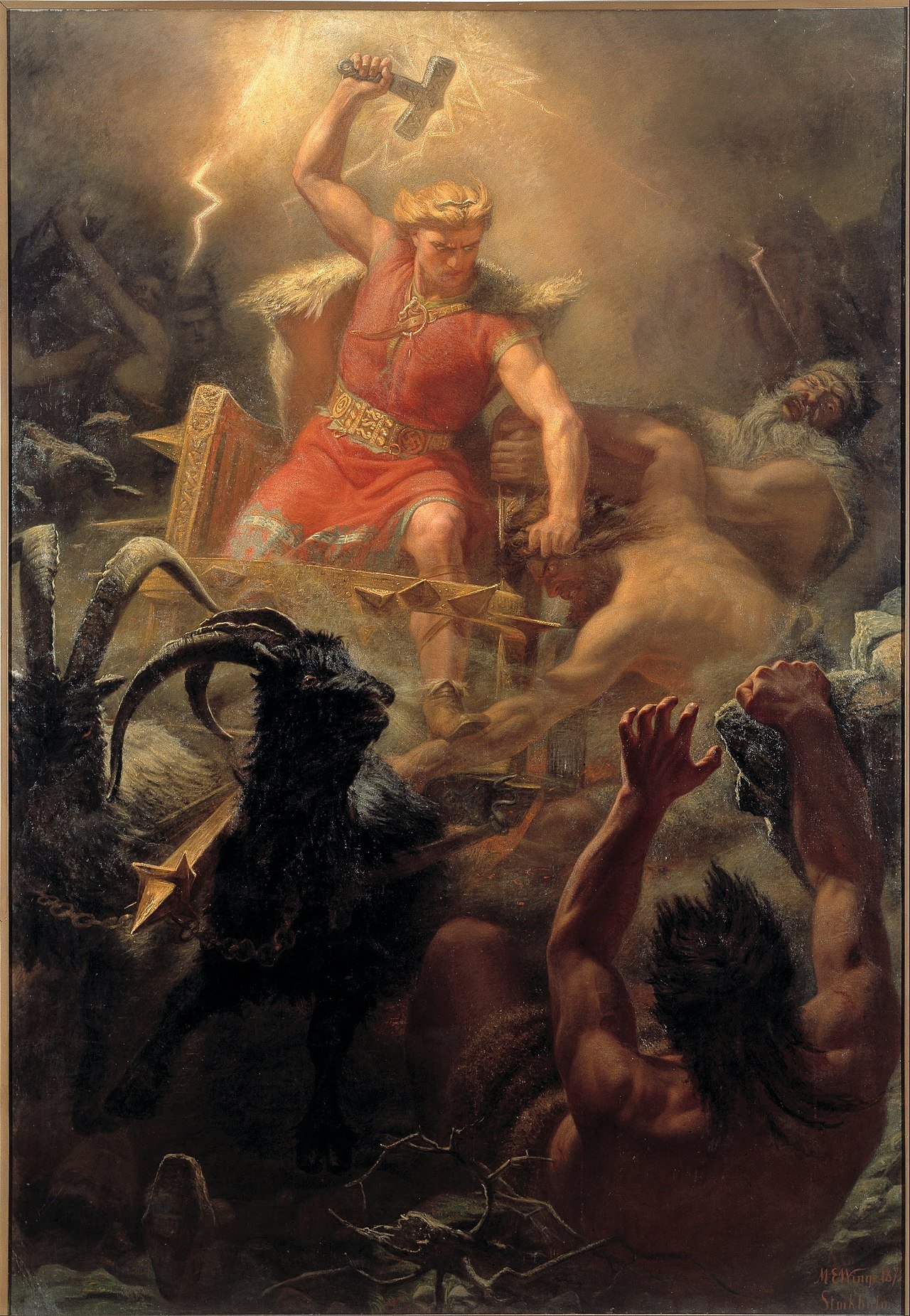
To get started with reading the sagas I can recommend the free course on edX. It gives an introduction into the history of the icelandic sagas and introduces a lot of primary and secondary sources. I took the course a year ago and it helped tremendously.
Frigg, the wife of Odin, often doesn’t get the same share of the spotlight as some of the other Norse deities. This document, as linked in Reddit’s r/Norse resources list, provides an overview of Frigg’s entries in various scholarly handbooks in recent times.
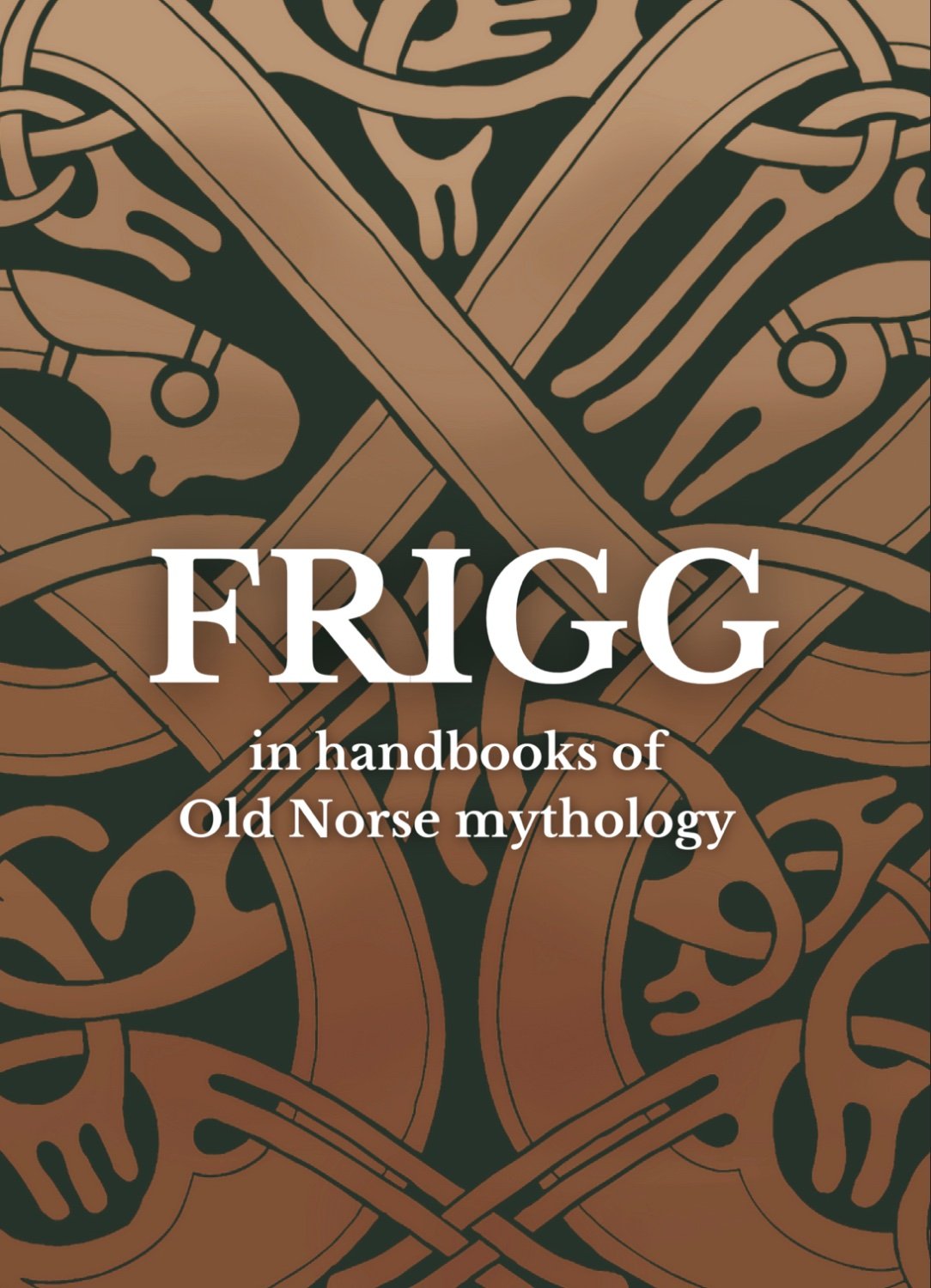
When most people hear the name “Thor” (Þórr in Old Norse), it conjures up images of a powerful, hammer-wielding master of lightning and thunder. However, it may be surprising to learn that a direct connection between Thor and thunder does not appear anywhere in the Poetic Edda, our foremost source for Norse mythology. Throughout its pages Thor is never referred to as a thunder god, never explicitly causes a crash of thunder or a flash of lightning, and is called by no heiti that is indisputably thunder-related.
The Poetic Edda contains only a couple of hints that Thor might have anything to do with thunder. For instance, he is often referred to by the name Hlórriði which is hard to decipher but could plausibly be connected to thunder. Also, the mountains are said to tremble (fjöll öll skjalfa) in Lokasenna 55, when Thor arrives to confront and silence the troublesome Loki. We might assume that they shake at the sound of thunder, although thunder itself isn’t actually mentioned.
In the Prose Edda, the second of our two foremost sources for pagan Norse tales, this association is almost non-existent as well. Although Thor is a frequently recurring character in the (alleged) author Snorri Sturluson’s narratives, his own prose contains only one line in a section called Skáldskaparmál that mentions thunder in any kind of association with Thor. At the beginning of Thor’s epic duel with the giant Hrungnir Snorri states:
Því næst sá hann eldingar ok heyrði þrumur stórar. Sá hann þá Þór í ásmóði. Fór hann ákafliga ok reiddi hamarinn ok kastaði um langa leið at Hrungni.
And in English (transl. by me):
Thereupon he (Hrungnir) saw lightning and heard great thunder. He then saw Thor in god-like wrath. He (Thor) went forth furiously, and swung the hammer, and cast it from a long distance at Hrungnir.
But how do we know this thunderstorm has anything at all to do with Thor and isn’t just Snorri’s description of epic battle scenery? For that matter, with so little in the way of association between Thor and thunder in the Eddas, where exactly does the idea of Thor as a thunder god even come from?
Let’s start with etymology.
The name Þórr is derived from the reconstructed word *þunraz in an older language called Proto-Germanic that was mostly unwritten. The word *þunraz meant “thunder” and has descendant words in various Germanic languages apart from Old Norse. In fact, a lot of what we know about Proto-Germanic comes from comparing descendant languages to find inherited similarities.
In Old English and Old High German, for example, the respective words þunor and donar are both descended from *þunraz and were both used to refer to the sound of thunder and also to a Thor-like deity. In Old English, the possessive form of þunor made its way into the word þunresdæg and eventually became “Thursday” in Modern English. The English Register of Oseney Abbey even shows Thursday being alternatively referred to as “þundurday” (literally “thunder day”) as late as 1490 in Middle English.
Interestingly, þruma, not þórr, is the Old Norse word for a clap of thunder. Its etymology is not entirely clear, but philologist and folklorist Jakob Grimm theorized that þruma could also be descended from the root in *þunraz by “metathesis of r, and change of n into m“, as Cleasby-Vigfusson summarized it. This is hard to verify, and would have been a pretty extreme linguistic evolution, but is also not entirely unheard of.
On the subject of difficult etymology, the name of Thor’s famous hammer, Mjǫllnir, may offer some interesting insights as well. In Dictionary of Northern Mythology, Rudolf Simek summarizes the historical debate about this word’s origin. “Earlier scholarship”, he says, connected it with Old Norse mala, meaning “to grind.” Others have made the obvious connection to Old Norse mjǫll, meaning “new snow” which evolved into Icelandic mjalli (“white color”) and may have, according to Simek’s summary, some connection to lightning as well. My personal favorite interpretation, which is admittedly not the most obvious but does provide a satisfying result, is a possible early borrowing from Old Slavic mlunuji (Russian molnija) which literally means “lightning” and would yield a definition of Mjǫllnir as “the one who makes lightning”.
But if we believe that Thor was so strongly associated with thunder based on etymology and hints from related Germanic mythology, why don’t we get a stronger association between Thor and thunder in the Eddas?
Declan Taggart notes that Thor is “a very flexible supernatural concept”. He theorizes that the unique conditions of Iceland, where the Eddas were written, may have caused Thor’s association with storms to become less prominent in that location. However, the broader association between Thor and thunder in ancient Scandinavia is made clearer through information provided by other authors and also via the odd skaldic poetry reference that does come from Iceland.
We have, for example, a stanza from Þórsdrápa, probably written by 10th century Icelandic skald Eilífr Goðrúnarson, referring to Thor as “the temple-steerer of the hovering chariot of the thunderstorm”.
To the east, in Denmark, a 12-13th century historian named Saxo Grammaticus authored a work called Gesta Danorum in which he sought to present an epic and illustrious history of the Danes. In Book 8, Saxo writes:
Thor, harassed by the giants’ insolence, had driven a burning ingot through the vitals of Geirrøth, who was struggling against him, and when this fell farther it had bored through and smashed the sides of the mountain; he confirmed that the women had been struck by the force of Thor’s thunderbolts and had paid the penalty for attacking his divinity by having their bodies broken.
– Gesta Danorum, Volume I; Karsten Friis-Jensen, Peter Fisher (transl.).
In Book 13, Saxo also provides his analysis of the origin of Thor’s famous hammer:
Now Magnus, too, emulated his vigorous pursuits with similar deeds of worth; among other distinctive trophies he had his followers bring back to his native country some unusually heavy implements known as Thor’s hammers, which were venerated by men of the primitive region on one of the islands. Ancient folk, in their desire to understand the causes of thunder, using an analogy from everyday life had wrought from a mass of bronze hammers of the sort they believed were used to instigate those crashes in the heavens, since they supposed the best way of copying the violence of such loud noises was with a kind of blacksmith’s tool.
Note that Saxo wrote his history in Latin. In the original text, the word written here as “Thor’s” is actually Iouiales, which is a form of an alternate name for the Roman god Jupiter.
Thor was often associated with both Hercules and Jupiter in ancient Latin texts by way of interpretatio romana, which was a method of interpreting the deities of various non-Roman peoples through the lens of the Roman pantheon. It is through the reverse process, interpretatio germanica, that the Germanic people came to associate Thor’s name with the same day of the week known in Latin as Iovis dies, “Day of Jove (Jupiter)”, a.k.a. Thursday. Thor’s association with thunder is evident again in this connection to Jupiter, who is another god famously tied to thunder.
The German chronicler Adam of Bremen living in the second half of the 11th century also provides a description of Thor’s position of prominence in a contemporary pagan temple at Uppsala. Alleging that his information comes from first-hand accounts, Adam states that:
Thor was the most powerful god and ruled over thunder and lightning, wind and rain, sunshine and crops. He sat in the centre with a hammer (Mjolnir) in his hand, and on each side were Odin, the god of war, in full armour and Frey, the god of peace and love, attributed with an enormous erect phallus.
– The History of the Archbishops of Hamburg-Bremen; Tschan (transl.)
Thor’s association with thunder is solidly apparent from a broad view. Many modern, North Germanic languages have even retained words for thunder incorporating Thor’s name. For instance, þórduna (Icelandic), tordön (Swedish), and torden (Danish and Norwegian) are all etymologically equal to “Thor’s din.” But the weakness of this association in our main sources for Norse myth is also fascinating.
A quick google search will probably yield a number of websites claiming that Thor’s common heiti Hlórriði means “the loud weather god” but this interpretation is not at all conclusive. Simek notes that this word is of “obscure etymology”, and “gives the impression of being an old cult name, but on the other hand it only occurs quite late” (p. 153). We are left to ponder on the fact that Thor clearly is a “loud weather god”, but interestingly, not so much in the Eddas.
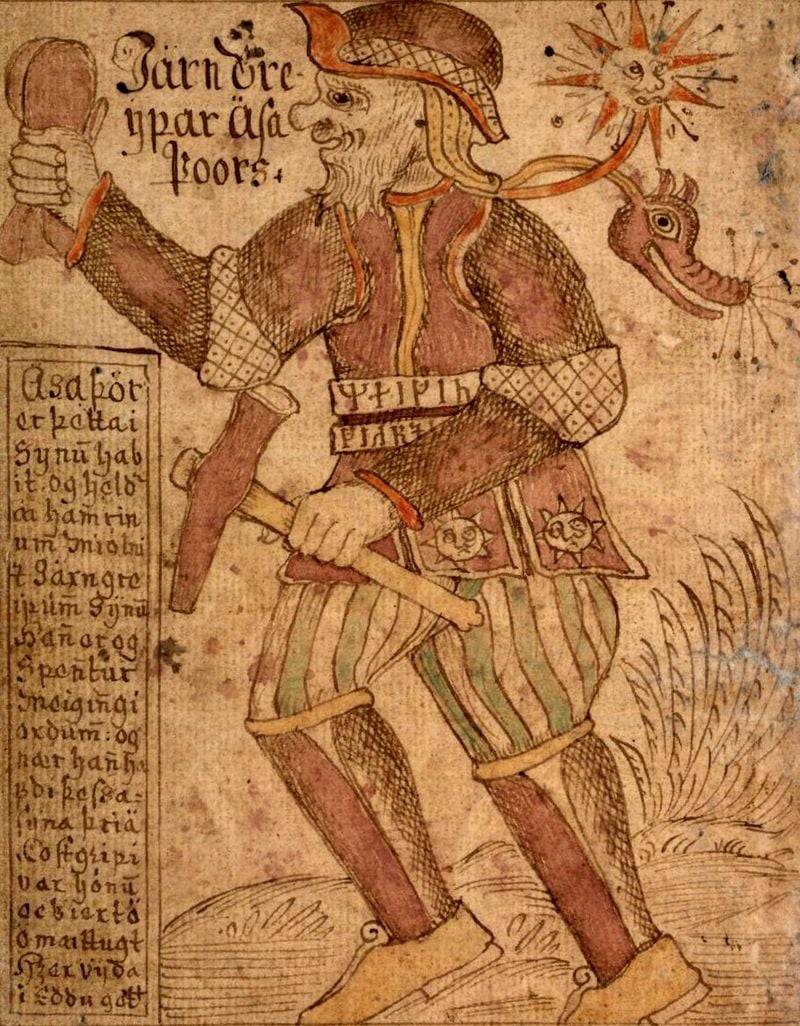
Norse mythology didn’t appear in a vacuum. The stories that have been passed down to us in Eddas and sagas generally reflect a late, Icelandic flavor of broader Germanic mythology that evolved over millennia out of even earlier Indo-European mythology.
We can pretty confidently date our mythological sources based on linguistic markers and, among these, some originated in the Viking age and others were composed sometime after. But lately I’ve been looking through them for little hints at memories passed down from an even earlier time.
Here’s a fun one I found:
Sapp (2019) dated the poem Helgakviða Hjörvarðssonar in the Poetic Edda to the second half of the 10th century. It is perhaps a little less than 100 years older than the canonical “end” of the Viking age which spanned, officially, from 793 AD to 1066 AD. In this poem, our hero Helgi is given a name by the valkyrie Sváfa who also tells him the location of a magic sword:
Sverð veit ek liggja í Sigarsholmi fjórum færi en fimm tögu; eitt er þeira öllum betra vígnesta böl ok varit gulli.
Hringr er í hjalti, hugr er í miðju, ógn er í oddi þeim er eiga getr; liggr með eggju ormr dreyrfáiðr, en á valböstu verpr naðr hala.
As per Larrington’s translation:
I know of swords lying on Sigarsholm, four less than fifty; one is better than all the rest, baleful among battle-needles, inlaid with gold.
Theres a ring on the hilt, there’s courage in the middle, and terror in its point, for him who can own it; a blood-dyed snake lies along the edge, on the boss an adder chases its tail.
What’s interesting to me about this passage is the description of the sword having a ring in its hilt. Though the poem dates to the Viking age, there have been no finds of Viking age swords that can be described as having a ring in the hilt.
However, this description does match the design of certain prestige swords from the earlier Migration Period. (← Link to a photo of a sword)
The Migration Period is commonly thought to span from about 375 AD when the Huns appeared in Europe until about 568 AD when the Lombards conquered Italy. Corresponding with the fall of the Western Roman Empire, this period saw the migrations of various Germanic peoples across Europe. Visigoths ended up in modern Spain, for example. Angles, Saxons, and some others ended up in Britain.
From what I was able to dig up, the ring-sword design first shows up in the late 400s among the Franks before quickly spreading into Scandinavia and into England by way of the Anglo-Saxon migrations. The style seems to reach peak popularity in the 500s or 600s before falling out of use entirely before the beginning of the Viking Age.
Hilda Davidson describes how these swords would have been highly prestigious items generally reserved for people of high nobility in her book The Sword in Anglo-Saxon England (1998). She concludes that the ring in the hilt represents a king, as a treasure-giver, gifting rings to his followers. It would have been thought of “both as a pledge on which an oath could be sworn and as a token of the link of generosity between the lord and his followers.” (p.77.)
The ancient memory of the prestige ring-sword as seemingly characterized by the magic sword in Helgakviða Hjörvarðssonar is fascinating to me. Perhaps there are other elements of this story that originate in a time when Attila roamed continental Europe and Óðinn was still known as Wōðinaz.
